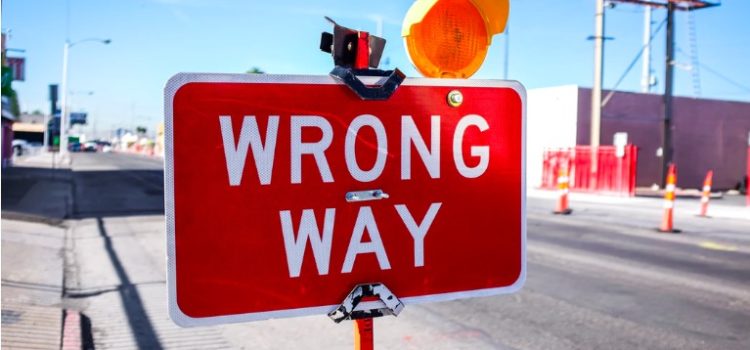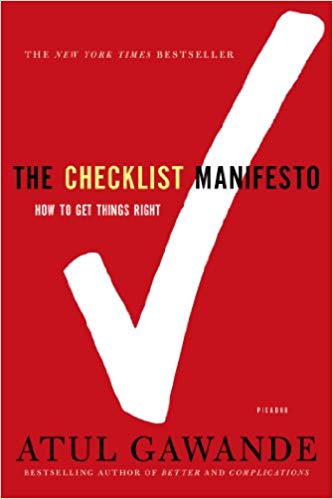

This article is an excerpt from the Shortform summary of "The Checklist Manifesto" by Atul Gawande. Shortform has the world's best summaries of books you should be reading.
Like this article? Sign up for a free trial here .
People are pretty amazing: we can predict dangerous storms, explore distant planets, and save people from life-threatening conditions and injuries. Yet highly trained, experienced, and capable people regularly make avoidable mistakes. Do you ever wonder how to avoid silly mistakes?
In The Checklist Manifesto, Boston surgeon Atul Gawande contends the reason is that knowledge and complexity in many fields have exceeded the capacity of any individual to get everything right. Under pressure, we make simple mistakes and overlook the obvious. Drawing lessons from spectacular successes and failures in recent years, he argues that the solution is a checklist. While not a how-to manual, his book builds the case for checklists and issues a plea for adopting this backstop to human fallibility. We’ll cover the key principles of how to avoid silly mistakes.
Why Do You Make Mistakes?
To understand how easy it is to make mistakes, despite our ability as humans to accomplish amazing things, consider how complex medicine has become as it has advanced.
An Israeli study several decades ago showed that the average ICU patient required 178 actions or procedures a day. We have a greater-than-ever chance to save someone who’s seriously ill, but it requires both deciding the right treatment and ensuring that 178 tasks are done correctly each day. There’s as much chance to harm a patient as to help.
How to avoid silly mistakes? In complex environments, checklists can help to prevent failure by addressing two problems:
- Our memory and attention to detail fail when we’re distracted by more urgent matters.
- People have a tendency to skip steps even when they remember them.
Checklists protect against failures because they remind you of the minimum necessary steps by spelling them out. They allow you to verify each step while also establishing and instilling a performance standard. This is how to avoid silly mistakes.
How to Make a Checklist
(Shortform note: also see “A Checklist for Checklists.”)
Creating a checklist is how to stop making stupid mistakes. Before creating a checklist, decide two things:
1) Define a clear ‘“pause point” at which the checklist is to be used (unless the moment is obvious, such as when something malfunctions).
2) Decide whether to create a Do-Confirm list or a Read-Do list.
To use a Do-Confirm checklist, team members perform their jobs from memory. Then they stop and go through the checklist and confirm that they completed every item on the checklist. In contrast, to use a Read-Do checklist, people carry out each task as they check it off, like a recipe.
(Shortform note: Choose the type of checklist that makes the most sense for the situation. For instance, a Read-Do list could be used when the sequence needs to be exact or the entire effort will fail, like in operating machinery or listing emergency tasks. A Do-Confirm list gives more freedom and is allowable when the stakes are lower, and a forgotten step can be done later out of sequence. Deciding which type of checklist to use is an important step in figuring out how to avoid silly mistakes.)
Once you’ve chosen which type of checklist you’re creating, follow these guidelines. This is how to avoid silly mistakes:
- Keep the checklist short, typically five to nine items, which is the limit of short-term memory. After 60 to 90 seconds, a checklist becomes a distraction from other things. People are likely to skip or miss steps.
- Focus on the “killer” items or steps that are most dangerous to miss but that are still sometimes overlooked.
- Remember that checklists are not supposed to be how-to guides. They are quick, simple tools to aid the recall of experts.
- Keep wording simple and exact.
- Use language and terminology familiar to the user.
- Fit the checklist on one page.
- Avoid clutter and unnecessary or distracting colors.
- Use upper and lowercase text in a sans serif font for ease of reading.
The last step is key to learning how to stop making stupid mistakes: Test your checklist in the real world — have people use it and provide feedback. Boorman tests his checklists in a flight simulator. Language that you think is clear may not be to someone else. In practice, things are always more complicated than anticipated. Keep revisiting and testing the checklist until it works consistently. These are keys to keep in mind when understanding how to avoid silly mistakes.
———End of Preview———

Like what you just read? Read the rest of the world's best summary of "The Checklist Manifesto" at Shortform . Learn the book's critical concepts in 20 minutes or less .
Here's what you'll find in our full The Checklist Manifesto summary :
- How checklists save millions of lives in healthcare and flights
- The two types of checklists that matter
- How to create your own revolutionary checklist






